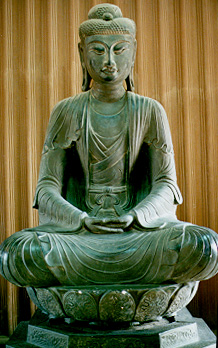|
|
|
¡@
| ¡@ | Overview |
||||||
| ¡@ | ¡@ | ¡@ | |||||
|
¡@ |
Some four-fifths of the 22 million people on this 36,000-square-kilometer (13,900-square-mile) island are descended from Chinese immigrants, who began arriving in the 17th century. They soon outnumbered the indigenous population. In 1949, following the communist victory on the mainland, more than two million Chinese Nationalists poured in. Taiwan is one of the Pacific Rim's most energetic manufacturing economies, with a buzzing stock exchange located in Taipei. Per capita income exceeded $10,000 in 1993. Taiwan is an island off the southeast coast of China (23 30 N, 121 00 E), comprised of several islands or island groups such as the Pescadores, Orchid Island, and Green Island. Taiwan lies between the Ryukyu Islands, which are part of Japan, to the north; and the Philippines, to the south. To the east of Taiwan is the Pacific Ocean, and to the west is the Taiwan Strait, which separates Taiwan from the mainland China. The total area of Taiwan, including the islands, is 35,981 square kilometers. This land area is 32,260 square kilometers. It has 1,448 kilometers of coastline. Taiwan's GovernmentTaiwan has a multiparty democratic regime type of government. It´´s capital is Taipei. The legal system is based on civil law system and accepts compulsory ICJ jurisdiction, with reservations. A person must be at least 20 years of age to vote. The chief of stat is President Le Teng-hui. The head of government is Premier (President of the Executive Yuan) Lien Chan. Taiwan´s constitution was written January 1, 1947, amended in 1992, and is presently undergoing revision. Governmental Structure There are three distinct layers of government in the ROC: (1) the central (national) level, consisting of the presidency, the five Yuan (governing branches:Executive Yuan, Legislative Yuan, Judicial Yuan, Examination Yuan, and Control Yuan) and the National Assembly; (2) the provincial/special municipality level in the Taiwan area, comprising the Taiwan and Fukien provincial governments and the Taipei and Kaohsiung city governments; and (3) the county/city level in the Taiwan area, including five city governments and 18 county governments. By January 1999, a total of 87 political parties had registered with the Ministry of the Interior. However, only three are seen as playing a significant role in ROC electoral politics: the current ruling party, the Kuomintang (also known as the KMT or Nationalist Party), which boasts a membership of 2.57 million; the Democratic Progressive Party (DPP), the largest opposition party, which claims a membership of 150,000; and the New Party (NP), with a registered membership of 68,000. The Flag of R.O.C.
|
The People of TaiwanThe population of Taiwan is about 21,500,000. 69% of their people are 15-64 years old, and the growth rate of population is 0.89%. The sex ratio of the total population has a sex ration of 1.2 male(s) per female. The life expectancy is 76.02 years. 84% of the population are Taiwanese, 14% of the people are mainland Chinese, and 2% are aborigine. The major religion is a mixture of Buddhist, Confucian, and Taoist, ablut 93%. Mandarin Chinese is the official language in Taiwan, though other dialects are also spoken. Many people can speak some English, but most taxi drivers do not speak English. |
 |
Taiwan faces intractable political problems which stem from differing views of the island's national identity that results from the history of Taiwan. Taiwan's political status always are confuse. Some conturies considere it as part of China, but acturally it has its government for over 50 years. The problem let Taiwan can't attend many international organizations and always be threaten by Mainland China.